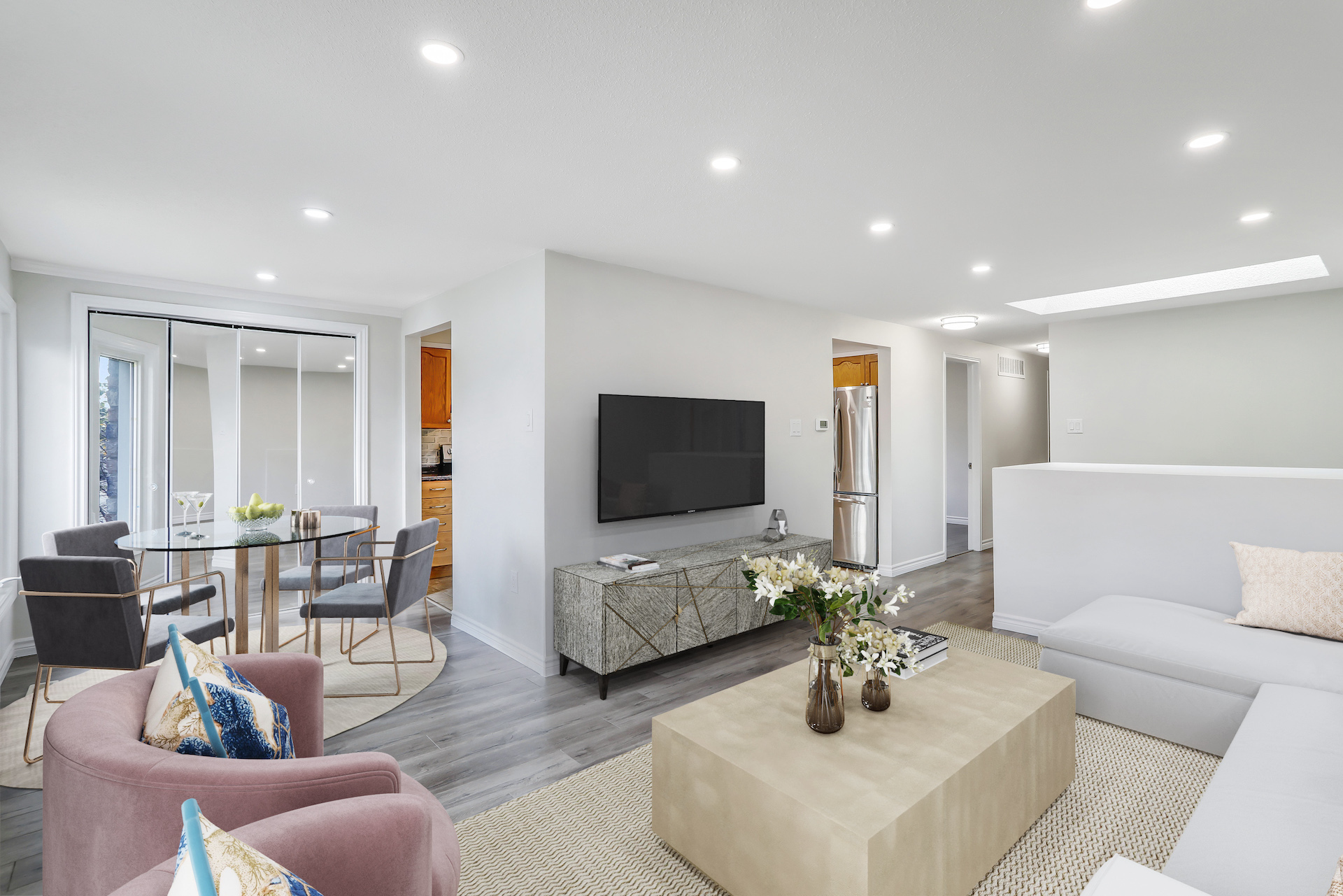Preparing a property for sale is not an easy task. It requires time, effort, and attention to detail. Property staging and preparing your home or condo for sale is a crucial part of the process that can significantly improve your chances of success. However, there are many things that can go wrong during the staging process that can hinder your efforts. In this article, we will discuss the top 24 things that can go wrong with property staging and preparing a home or condo for sale, and how to avoid them.
1. Poor decluttering
A cluttered home can be a major turn-off for potential buyers. It can make your property look smaller and less attractive. To avoid this mistake, consider renting a storage unit and keeping only essential items in your home.
2. Using inappropriate design or style
The design and style you choose for your home should cater to the target buyer’s preferences. For example, if your home is in a family-oriented neighborhood, consider a design that is child-friendly.
3. Not paying attention to the current buyers’ needs
Buyers’ needs are constantly evolving, and factors such as the growing demand for a home office need to be considered. Make sure that your property meets the current buyers’ needs.
4. Having too much furniture
An overcrowded home can negatively affect your property’s visual appeal for potential buyers. Remove unnecessary furniture items.
5. Using furniture that doesn’t fit the room
Furniture that’s too large or too small for a room can make the space look awkward. Choose furniture that is proportional to the room’s dimensions.
6. Not taking care of household smell
Unpleasant odours can put off potential buyers. Make sure your house is well ventilated, clean and has a pleasant smell.
7. Using inappropriate paint colours
Inappropriate paint colour choices can negatively impact buyers’ perceptions of the space. Consider neutral shades that appeal to a broader audience.
8. Drastically different colour palettes across the home
Using different colours for each room can make your home look inconsistent and lack flow. Try to match the colours used throughout your home.
9. Pushing all furniture against the walls
While this may seem like a good way to create more space, it can make the room feel uninviting. Rearrange furniture items and create more symmetry in a room.
10. A lack of light
A poorly lit space can make the room appear less appealing. Use light fixtures that cater to the room and increase natural light.
11. Hanging artwork too high or too low
Artwork that’s too high can make the ceiling look lower and the space cramped. Hang artwork at eye-level for a more flattering effect.
12. Not furnishing/staging the entire property
Failing to stage a room or an area in your home can make the property appear incomplete or neglected. Take the time to stage every room.
13. Leaving rooms vacant
Vacant rooms can make a property feel cold and uninviting. Furnish every room, even if it’s just with a few pieces of furniture.
14. Lack of style
A bland and unappealing atmosphere can make your property forgettable. Incorporate some themes or accessories that can grab potential buyers’ attention.
15. Misinterpreting the practical limitations of staging
Staging can only do so much, and it cannot fix major structural defects or serious problems that need fixing. Do necessary repairs when possible.
16. Not creating a focal point
Creating a focal point in each room can increase its visual appeal. Consider adding an impressive piece of art, furniture item, or feature.
17. Using incorrect lighting temperature
The lighting should complement the colour scheme of the room that it is in. Consider using soft white bulbs that create beautiful ambient light lighting.
18. Not taking into account the seasons
Seasonal considerations must be made so that the interior design complements the atmosphere outside. Use warm colours in winter and cool colours in summer.
19. Neglecting outdoor areas
A beautiful lawn or garden can significantly boost your property’s visual appeal. Take the time to maintain your outdoor area.
20. Not displaying enough storage.
Displaying enough storage and decluttering is very important as it can make a space appear larger and more functional.
21. Using inconsistent colours
Try to follow colour schemes to create a sense of equality within the house, as this enhances a room’s charm.
22. Forgetting about texture
Textures like wood, metal, and fabric can give different areas of your home a dynamic look that may attract potential buyers.
23. Ignoring the importance of curb appeal
Curb appeal can create an excellent first impression. Make sure your property’s exterior looks good, with well-maintained hedges and colourful plants.
24. Refusing to take expert advice.
Professional home staging consultants can be helpful because they bring fresh perspective, experience and knowledge to the sale.
Conclusion:
When staging a property for sale, it’s important to focus on the 20% of staging tips that will lead to 80% of the best first impression for potential buyers. Here are some tips to ensure staging success:
1. Pay attention to decluttering and removing personal items that might make it difficult for potential buyers to imagine themselves living in the space.
2. Take the current buyers’ needs into account, especially in the growing demand for home offices.
3. Avoid having too much furniture in a room or using furniture that doesn’t fit the room.
4. Pay attention to household smells and use appropriate paint colours.
5. Avoid hanging artwork too high and pushing all the furniture against the walls, as it can make a room appear smaller.
6. Furnish and stage the entire property to create a consistent style and feel.
Understand that staging can realistically make a significant difference in attracting potential buyers. Here are 20 staging tips to help you amplify your property:
1. Create Curb Appeal
2. Remove Clutter
3. Choose Neutral Colours
4. Brighten Up
5. Use Plants and Flowers
6. Create a Focal Point
7. Arrange Furniture for Conversation
8. Define Areas
9. Add Pillows and Throws
10. Use Rugs
11. Light The Space
12. Use Artwork And Mirrors
13. Style Your Fireplace
14. Add Limited Decorative Items
15. Remove Personal Items
16. Style Your Dining Table
17. Depersonalize
18. Deep clean
19. Choose The Right Scent
20. Work With A Home Stager.
GOOD HOME STAGING:
1. Decluttered and Organized Spaces: Good home staging involves decluttering and organising spaces, such as the living room and bedroom, to create a sense of openness and cleanliness. The goal is to showcase the space, not your clutter.
2. Natural Light: Natural light is essential to good home staging. It creates an inviting, warm, and welcoming environment that potential buyers will find appealing.
3. Neutral Colours: Using neutral colours for walls, furniture, and accessories in the home staging process makes it easier for home buyers to visualise themselves living in the space.
4. Well-Placed Furniture: Good staging involves placing furniture in a way that emphasises the features of a room while still allowing for ease of movement.
5. Artistic Accessories: Using tasteful and artistic accessories, such as wall art, vases, or decorative pillows, can help create a sense of warmth and homeliness in the living space.
6. Proper Lighting: The proper lighting sets the mood for every room, which is crucial for home staging. It could highlight focal points, enhance natural light, or create atmosphere and ambience in the space.
7. Attention to Detail: Paying attention to each detail, such as keeping the floors clean, hanging curtains, or polishing the furniture can complete the home staging look.
BAD HOME STAGING:
1. Cluttered Home: A cluttered home is a turnoff for home buyers. It can make a space feel disorganised and small.
2. Poor Lighting: A poorly lit house can create a gloomy and uninviting atmosphere, making it hard for prospective buyers to see the home’s features.
3. Obstructed Walkways: Obstructed walkways from excess furniture or cluttered decor can create an obstacle course feel in the home.
4. Overly Personalised Rooms: Overly personalised rooms, such as walls adorned with family portraits, can distract potential buyers’ vision from envisioning themselves in the space.
5. Poorly Placed Furniture: Poorly placed furniture is confusing and could make potential buyers wonder if the space is too small or awkward for their needs.
6. Bold or Dark Wall Colors: Bold and dark wall colours can turn off home buyers, as it could be difficult to picture customising the room to their liking.
7. Poorly Coordinated Accessories: Poorly coordinated accessories, such as mismatched patterns or clashing colours, can create an eye-disturbing scene rather than a cohesive environment.

BIG PICTURE 360 IS A PHOTOGRAPHY
Learn more about our real estate photography, virtual tours, and drone photography services.

